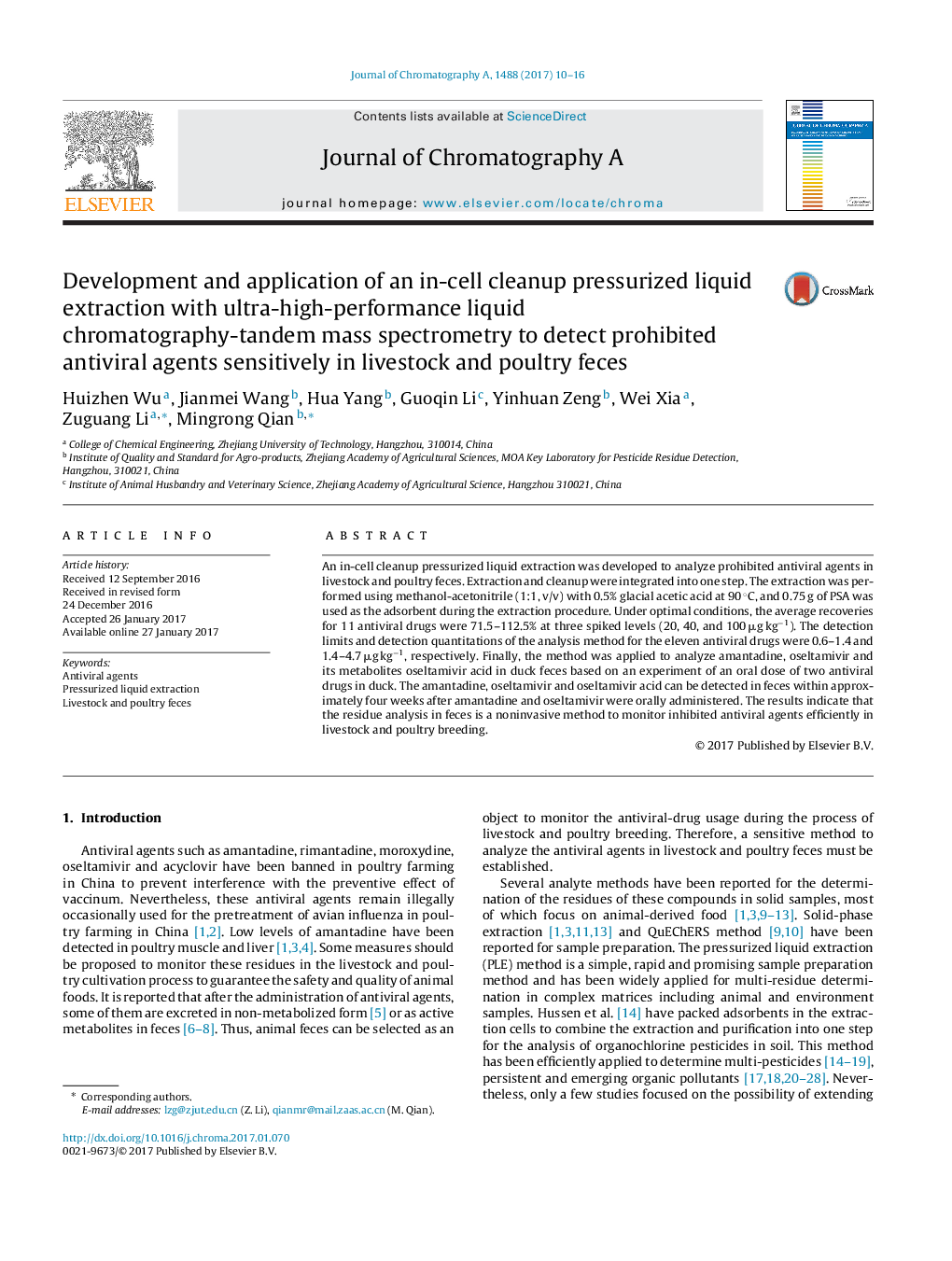| Article ID | Journal | Published Year | Pages | File Type |
|---|---|---|---|---|
| 5135516 | Journal of Chromatography A | 2017 | 7 Pages |
â¢A noninvasive way to monitor prohibited antiviral agents use in animal breeding.â¢The extraction and cleanup were integrated into one step.â¢Optimized and validated the in-cell cleanup PLE method.â¢Four weeks after oral administered, the drugs also can be detected in the feces.â¢Successful application of this method in duck feces.
An in-cell cleanup pressurized liquid extraction was developed to analyze prohibited antiviral agents in livestock and poultry feces. Extraction and cleanup were integrated into one step. The extraction was performed using methanol-acetonitrile (1:1, v/v) with 0.5% glacial acetic acid at 90 °C, and 0.75 g of PSA was used as the adsorbent during the extraction procedure. Under optimal conditions, the average recoveries for 11 antiviral drugs were 71.5-112.5% at three spiked levels (20, 40, and 100 μg kgâ1). The detection limits and detection quantitations of the analysis method for the eleven antiviral drugs were 0.6-1.4 and 1.4-4.7 μg kgâ1, respectively. Finally, the method was applied to analyze amantadine, oseltamivir and its metabolites oseltamivir acid in duck feces based on an experiment of an oral dose of two antiviral drugs in duck. The amantadine, oseltamivir and oseltamivir acid can be detected in feces within approximately four weeks after amantadine and oseltamivir were orally administered. The results indicate that the residue analysis in feces is a noninvasive method to monitor inhibited antiviral agents efficiently in livestock and poultry breeding.
